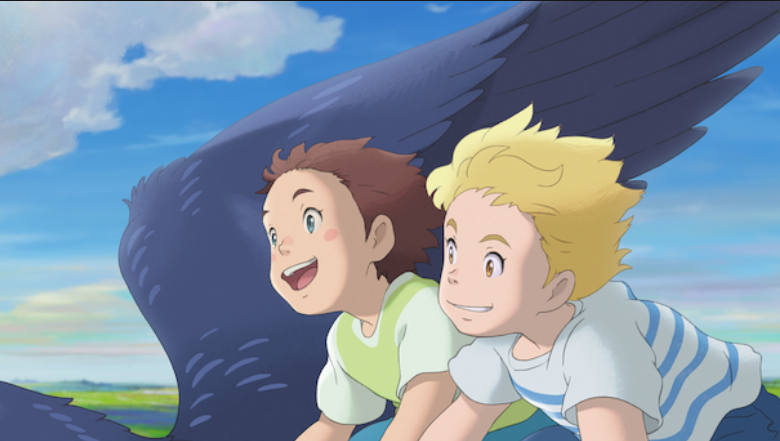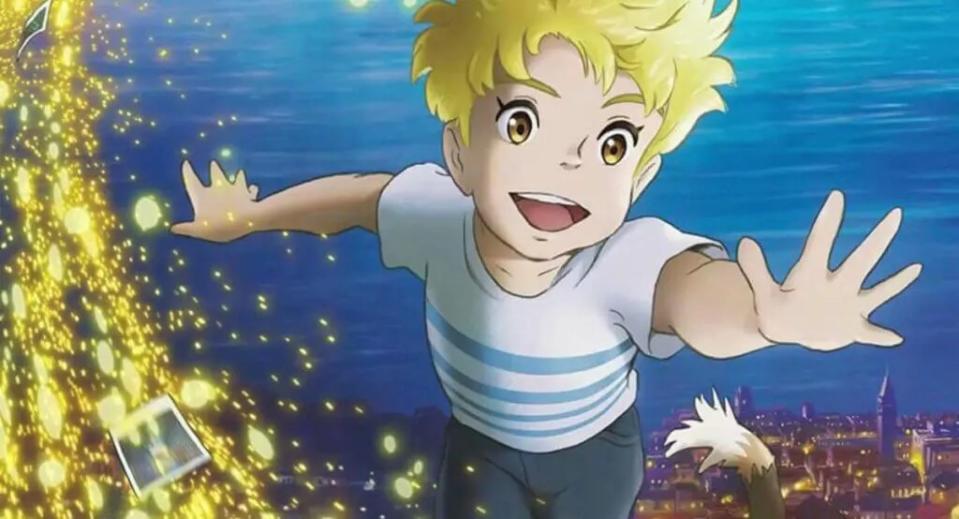‘The Imaginary’ Review: Studio Ponoc’s Second Feature Struggles to Conjure the Old Ghibli Magic

Born from the ashes of a then-defunct Studio Ghibli (which has itself enjoyed something of a phoenix saga over the last few years), Studio Ponoc was founded in the hopes of keeping a certain tradition alive — of preserving the kingdom of dreams and madness in the face of a world that had turned its back on hand-drawn animation, and lost faith in the magic that masters like Hayao Miyazaki has been able to create with it. Ponoc debuted with 2017’s “Mary and the Witch’s Flower,” an undercooked but gorgeously rendered fable that replicated the look of Ghibli classics like “Kiki’s Delivery Service” and “Castle in the Sky,” but failed to capture the breezy sense of wonder that allowed those masterpieces to breathe real life into every frame. As a movie, it was disappointing. As a proof-of-concept, however, it was an optimistic promise of what the future might hold once Miyazaki released his grip on the present.
Seven years later, that promise remains unfulfilled. On the one hand, that’s partially because Miyazaki is still going strong. On the other hand, it’s also because Ponoc’s long-gestating second feature does more to question the studio’s potential than it does to realize it. Even more dazzling to behold than its predecessor, Yoshiyuki Momose’s “The Imaginary” is a precipitous step down for Ponoc in every other respect, as this creatively unbound tale about imaginary friends is so determined to spirit you away that it soon loses any meaningful grip on reality.
More from IndieWire
Adapted from A.F. Harrold’s 2014 children’s novel of the same name (and more prohibitively aimed at kids than even the lightest of Studio Ghibli’s movies have ever been), “The Imaginary” unfolds like an awkward cross between “Monsters, Inc.” and John Krasinksi’s “IF” — a dark truth that doesn’t fully reveal itself until the start of the second act, after you’ve already spent a good 30 minutes or so being prepared for this story to go in a richer and more grounded direction.
Which isn’t to suggest that Yoshiaki Nishimura’s script doesn’t rocket into fantasyland right out of the gate. On the contrary, this movie launches us deep into the brain of a young British girl named Amanda Shuffleup, whose technicolor imagination is so overactive that it’s hard to imagine she has any brain power left for the real world. We’re talking crystal castles, flying whales, a 50-foot yeti with a banjo on its back, and enough unbridled creativity of all kinds to fill a dozen anime series with fun creatures and shimmering landscapes. There isn’t much evident rhyme or reason to the colorful detritus of Amanda’s mind, but “The Imaginary” is playing a volume game, and the sheer muchness of what Momose throws at the screen only accelerates as the movie goes on.
The only detail that matters in Amanda’s mind is a little blond star child named Rudger — absolutely not to be confused with “Roger” — who she first thought up three months, three weeks, and three days before this story begins. Well, “thought up” may be the wrong way of putting it in a film that suggests imaginary friends are elemental beings who hang out in an extra-dimensional library until they see a “job posting” (read: a lonely kid) that piques their interest, but the fact is that Rudger has found Amanda (Evie Kiszel) at a time when she’s desperate for distraction, and it seems like the feeling cuts both ways.
Surprisingly, and to the film’s great detriment, “The Imaginary” turns out to be more interested in why Rudger needs Amanda than the other way around. Well-voiced by Louie Rudge-Buchanan in a largely stiff English-language dub that’s only preferable to the Japanese because it feels more appropriate in context, Rudger — and not the real girl — who eventually prove to be the protagonist here, a hierarchy that only becomes clear when Amanda gets hit by a car after a classic Ghibli-esque weirdo called Mr. Bunting scares her out of her mother’s failing bookstore (he’s voiced by Jeremy Swift in the English dub and the great Issey Ogata on the Japanese track).
In fairness to Amanda, this Mr. Bunting character is a real freak, as you can tell by his penchant for ugly Hawaiian shirts and also I suppose the bulbous red nose he uses to sniff out imaginary friends so he can eat them (there are a few half-hearted attempts to give him a more coherent backstory, but it honestly seems like the dude is just in it for the taste). And if that weren’t scary enough, Mr. Bunting has an imaginary friend of his own: The dead girl from “The Ring.” Not literally, because of copyright issues, but you get the idea.
This is when the movie begins to lose its grip on reality in more ways than one, as Rudger — inexplicably but immediately convinced that his person is dead — is guided to the mystical library of imaginary friends, where he’s introduced to more wacky characters than “The Imaginary” could ever hope to make us care about. None of them are interesting (least of all Hayley Atwell’s Lizzie, who’s essentially the figment in chief), but most of them are fun enough to keep young kids engaged for a while.

And that seems to be the primary goal of the film’s middle portion, which abandons any semblance of a plot in order to enumerate the nonsensical rules of its world until the time comes for Rudger to reunite with Amanda in the hospital and affirm the meaningfulness of their friendship. There are hints of pathos along the way — most poignantly when “The Imaginary” glances against the idea that our relationships with people who aren’t really there are just as meaningful as anything else — but this adaptation is far more interested in fantasy than why a girl like Amanda might need it.
Want to know why imaginary friends love weekends? Nishimura’s script has you covered. Want to know literally anything about Amanda’s relationship with her mom? Forget about that, a tiny skeleton named Cruncher of Bones is flying through outer space with a talking pink hippo for reasons that no adult could ever hope to explain. What should we make of Rudger’s admission that he wants to play with other children too? Hard to say, but at least we get to meet Beethoven’s imaginary friend.
“The Imaginary” throws a slurry of new ideas at the wall, but the lack of internal logic between them makes it difficult for any of them to stick; while kids are likely to delight in a story that celebrates the power of their creativity, there’s little chance for them to find their footing in all of the chaos, and the characters just aren’t memorable enough to guide them. That goes for Rudger, Lizzie, and even the heterochromatic-eyed cat voiced by a sleepy Kal Penn, whose role is to literally guide imaginary friends to where they belong.
It doesn’t help that the various faces, hippo and human alike, are much less expressive than what you’d find in even a subpar Ghibli film, or that the world around them — colorful as it is — is as stiff as it is candied in a way that always makes it feel as if it’s compensating for something. It looks stunning next to the usual 3D slop that Studio Ponoc exists to counteract, but its beauty is as desperate to distract us from the movie’s underlying hollowness as Rudger is to distract Amanda from her pain. Both fall well short of that goal. The evil Mr. Bunting wants us to believe that reality will always win over imagination. In “The Imaginary,” neither side puts up much of a fight.
Grade: C
“The Imaginary” premiered at the 2024 Annecy Animation Festival. It will be available to stream on Netflix starting Friday, July 5.
Best of IndieWire
Sign up for Indiewire's Newsletter. For the latest news, follow us on Facebook, Twitter, and Instagram.

 Yahoo News
Yahoo News 
